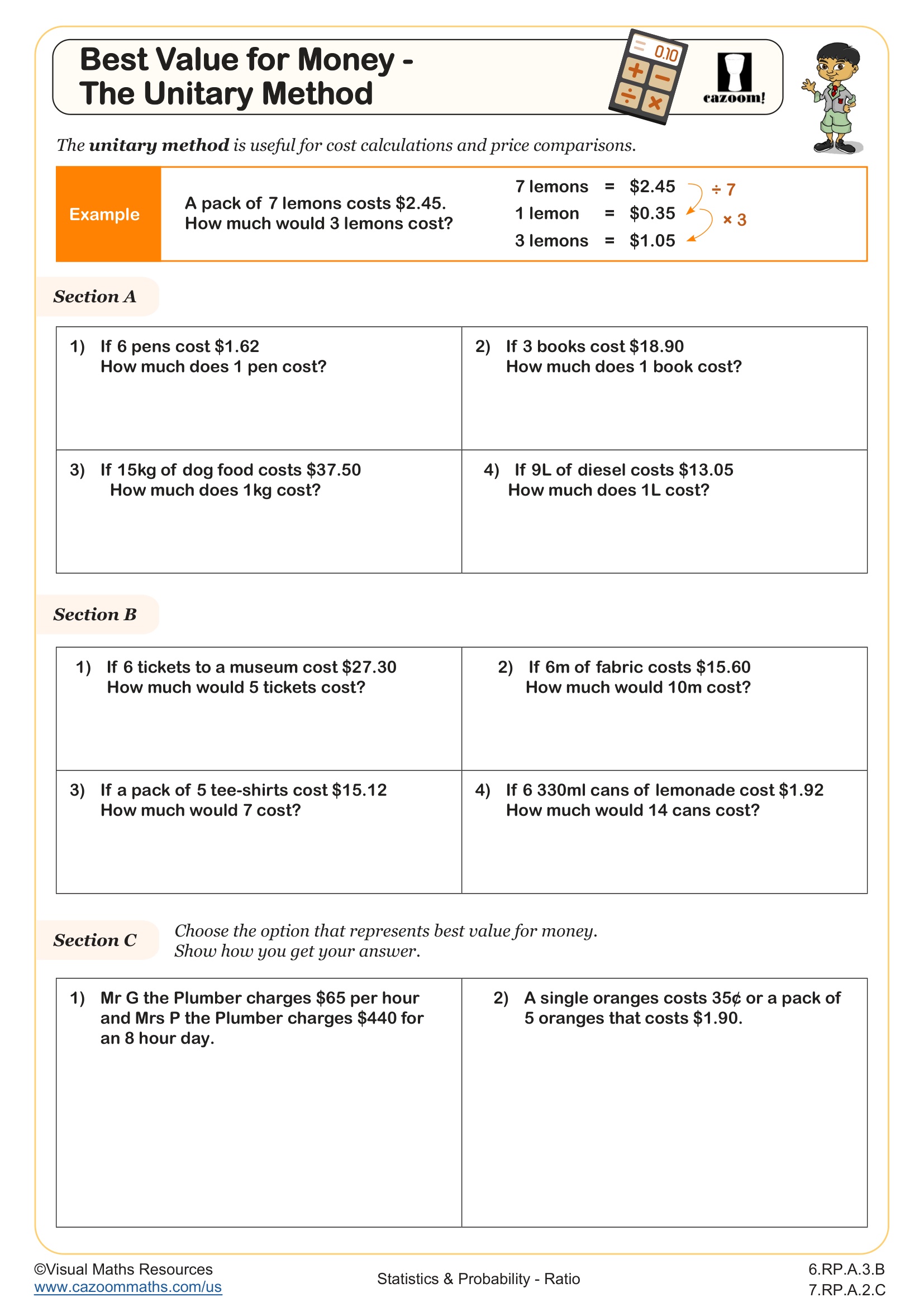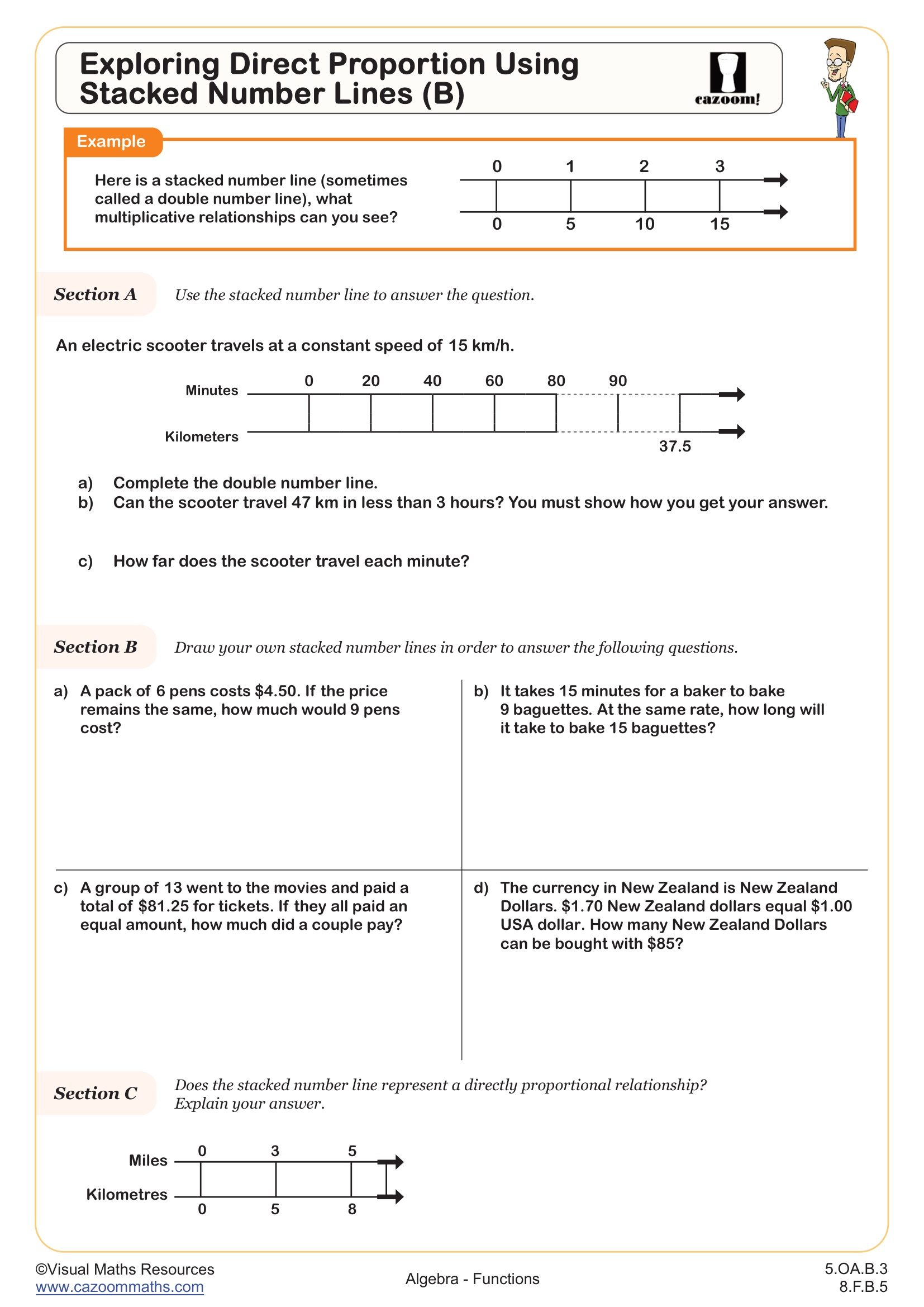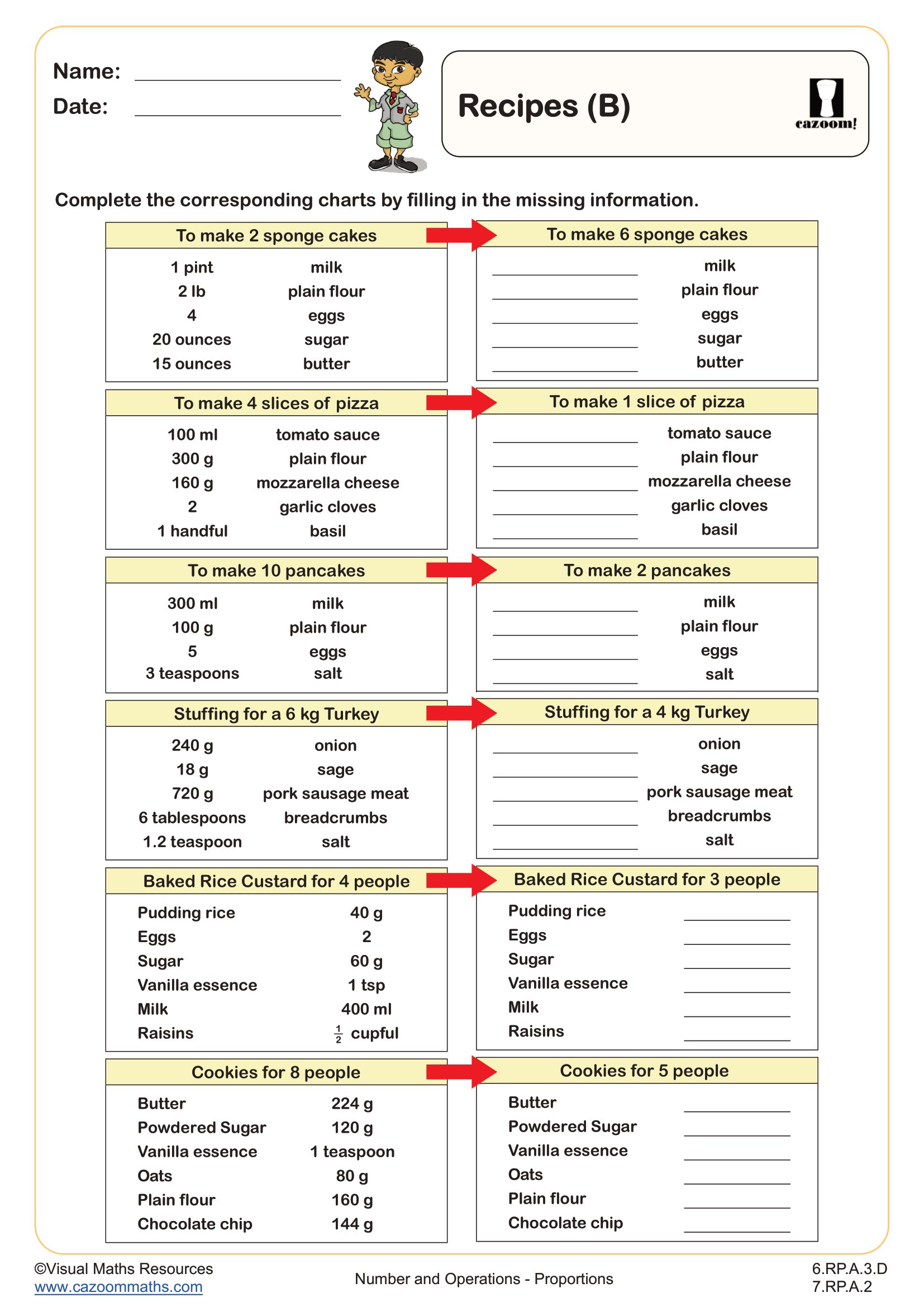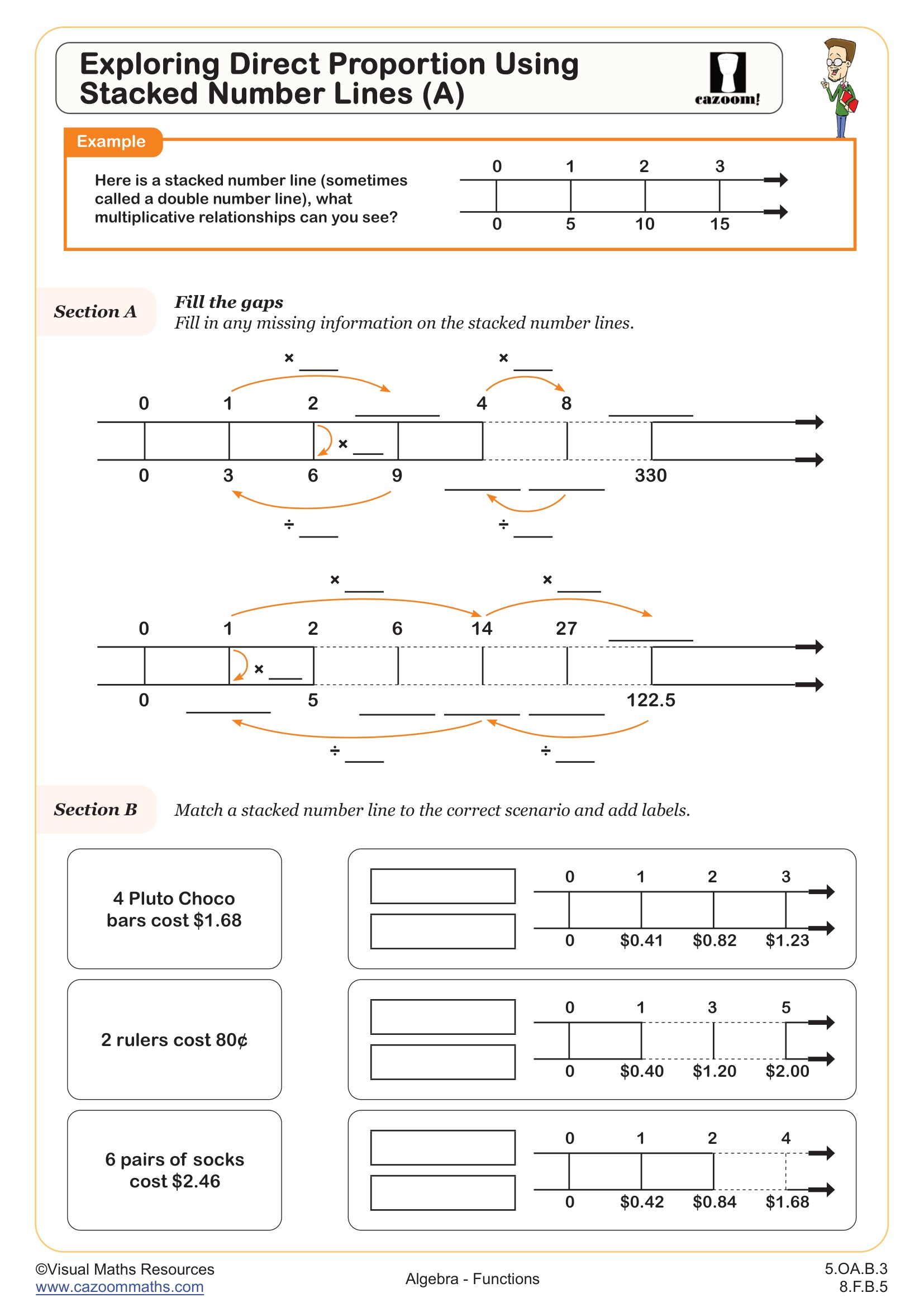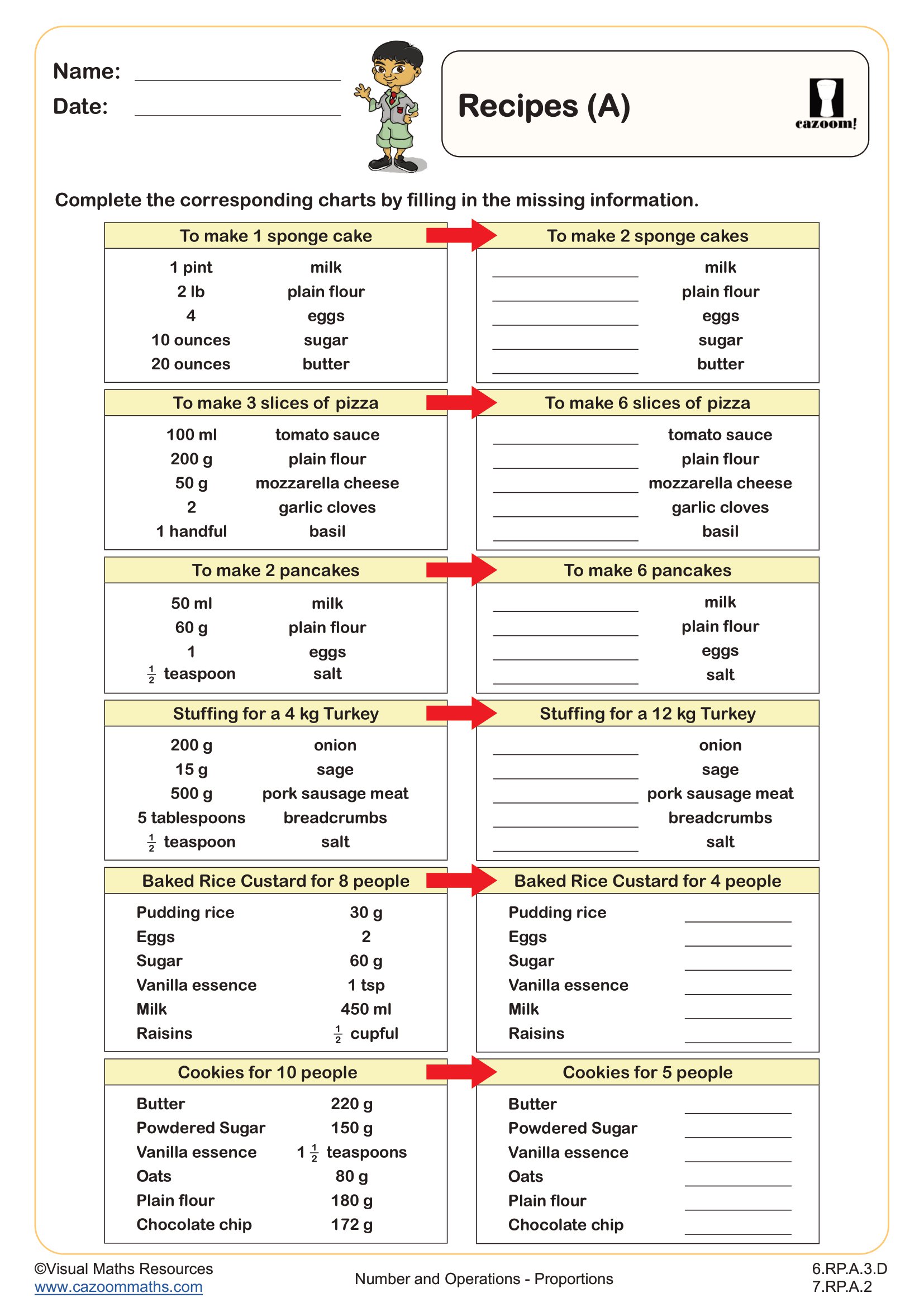Back to:
Best Value for Money - the Unitary Method WORKSHEET
Suitable for Grades: 6th Grade, 7th Grade
CCSS: 6.RP.A.3.B, 7.RP.A.2.C
CCSS Description: Solve unit rate problems including those involving unit pricing and constant speed. For example, if it took 7 hours to mow 4 lawns, then at that rate, how many lawns could be mowed in 35 hours? At what rate were lawns being mowed?
Represent proportional relationships by equations. For example, if total cost t is proportional to the number n of items purchased at a constant price p, the relationship between the total cost and the number of items can be expressed as t = pn
Represent proportional relationships by equations. For example, if total cost t is proportional to the number n of items purchased at a constant price p, the relationship between the total cost and the number of items can be expressed as t = pn
Best Value for Money - the Unitary Method WORKSHEET DESCRIPTION
This worksheet will guide your learners through comparing prices using unit scaling beginning with using direct proportion to find the cost of 1 unit when m units cost £n in section A. Section B sees pupils scaling prices down to 1 unit and then scaling up to another amount. The price comparisons start in Section C and in Section D the special offers such as ‘buy one get one half price’ are introduced. Students will work with volumes and mass as well as currency conversions throughout and will have to consider when rounding to the nearest penny is appropriate or not.
